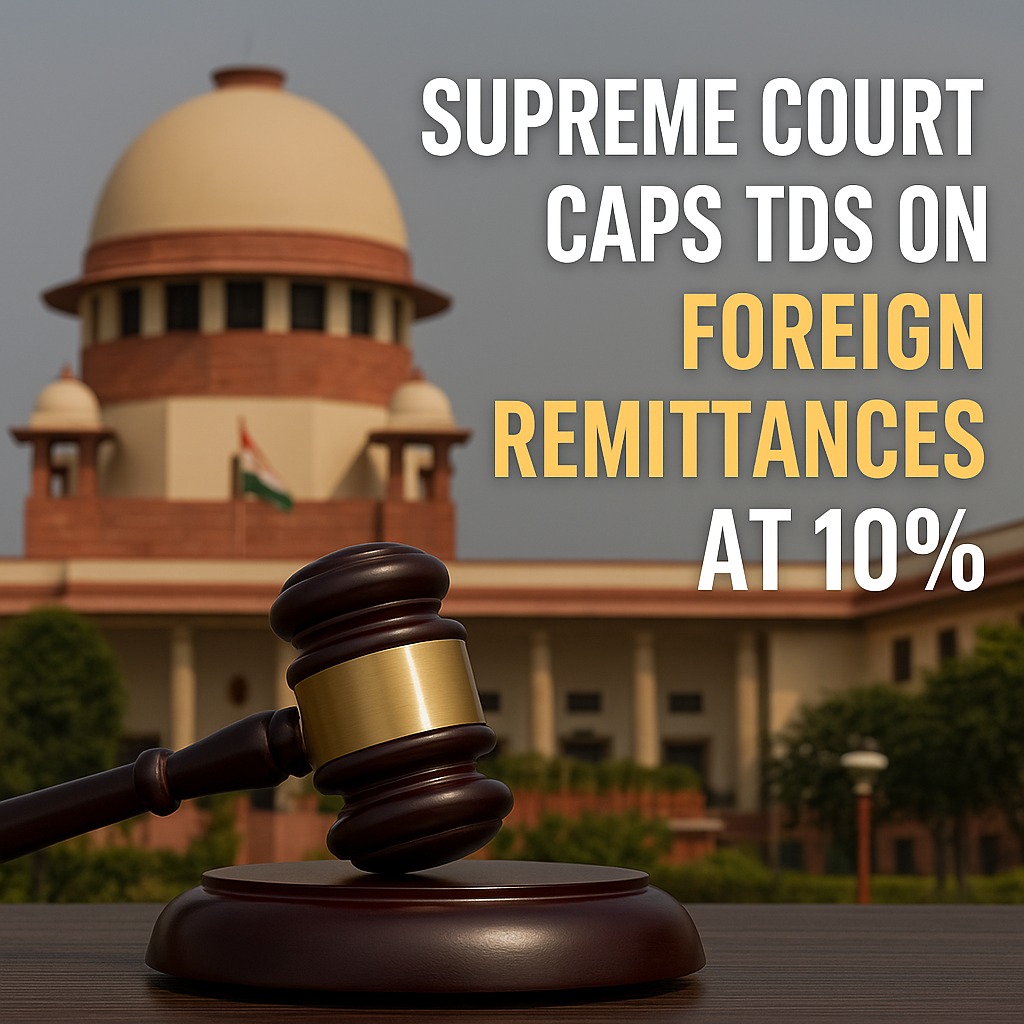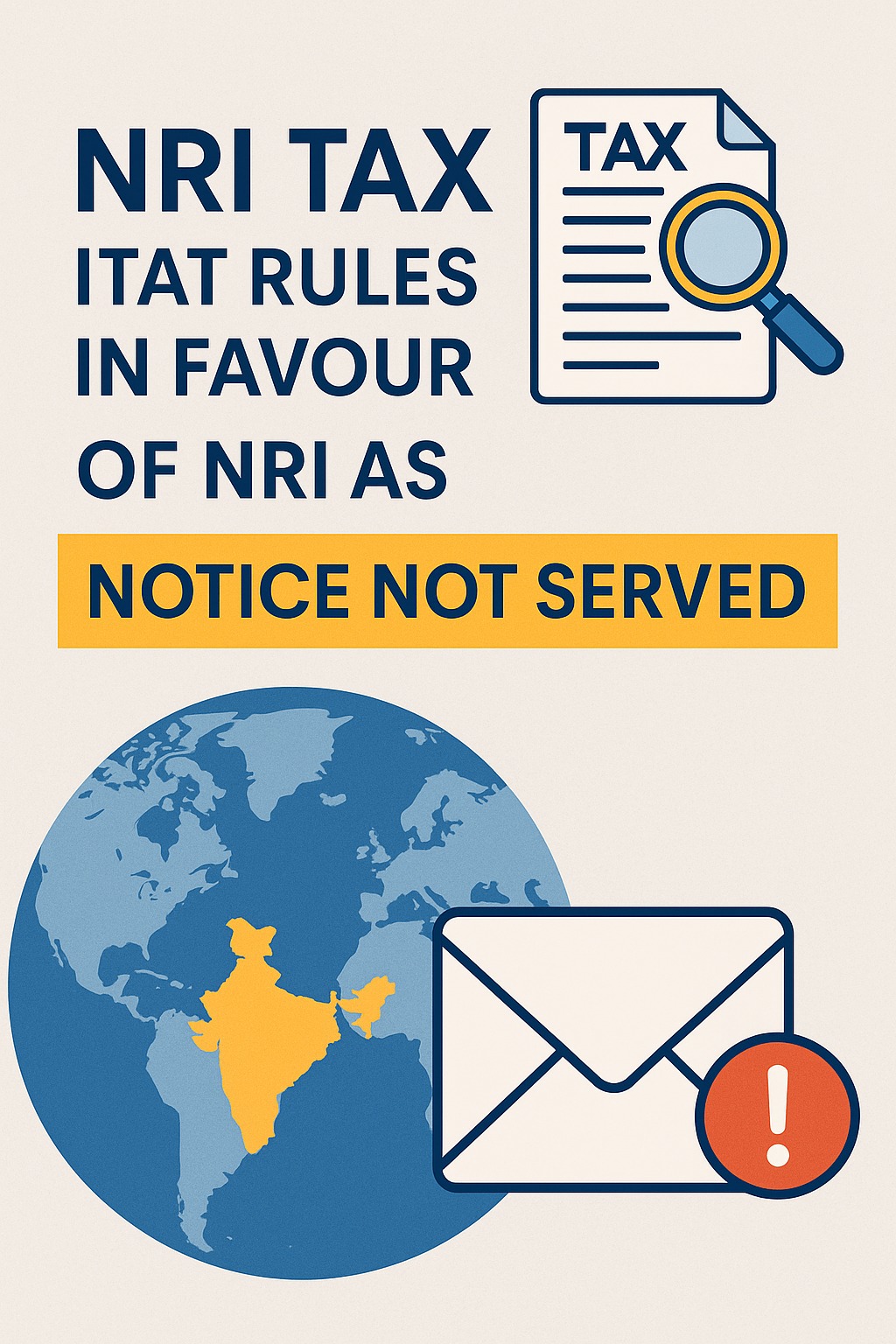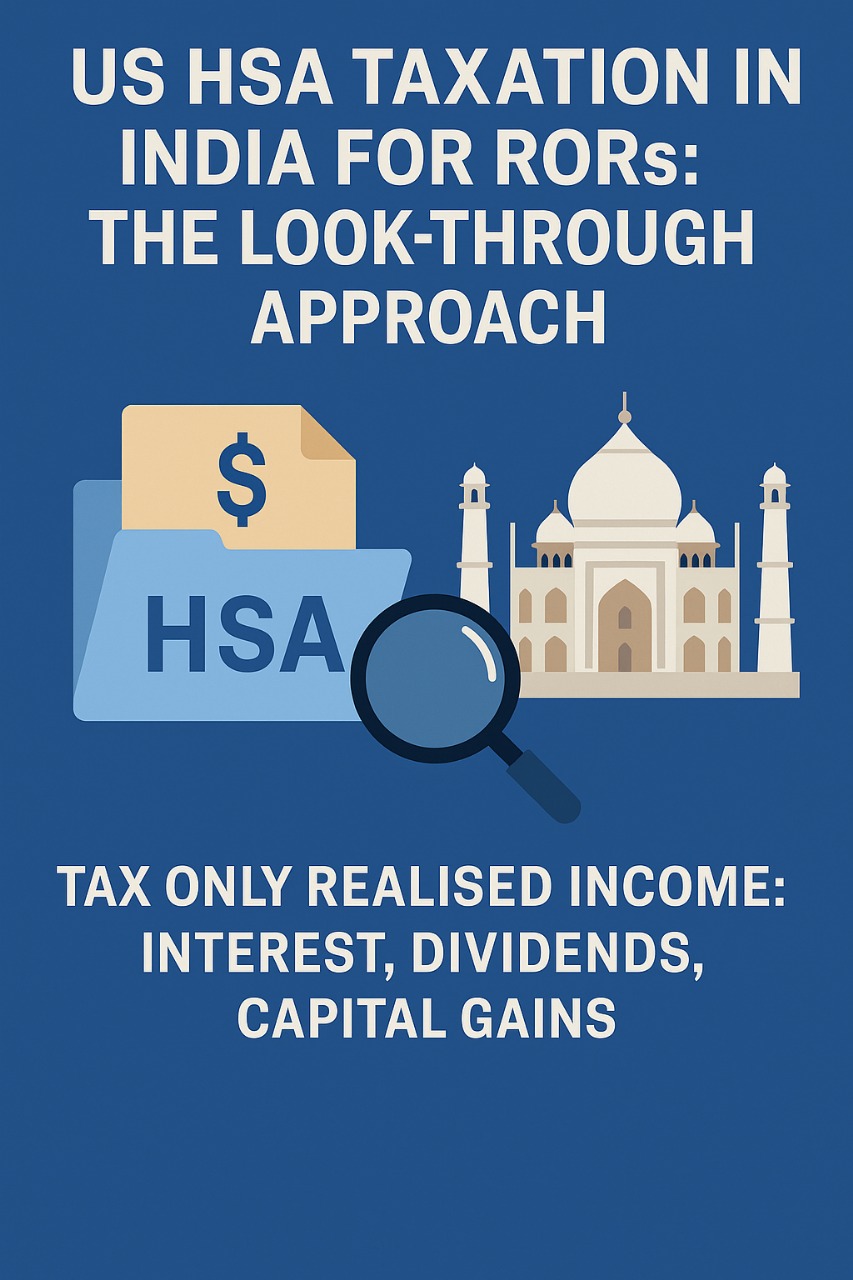 WhatsApp
WhatsApp
 Call Us
Call Us
 Email Us
Email Us
 Whatsapp Community
Whatsapp Community

In a landmark judgment, the Supreme Court of India has ruled that Tax Deduction at Source (TDS) on foreign remittances to non-resident entities cannot exceed 10% when a Double Taxation Avoidance Agreement (DTAA) applies. This ruling puts a decisive end to disputes where the Income Tax Department demanded 20% TDS on the grounds that the foreign recipient did not furnish a Permanent Account Number (PAN) under Section 206AA of the Income Tax Act, 1961.
The apex court held that when a non-resident is eligible for treaty benefits, the DTAA provisions prevail over domestic tax law, reinforcing that the Income Tax Act cannot override DTAA.
This key judgment delivers significant clarity and relief for NRIs, foreign companies, multinational businesses operating in India, and Indian companies making cross-border payments.
This ruling came after the Income Tax Department appealed to impose 20% TDS on companies such as Wipro, Mphasis, and Manthan Software Services, which were making payments for technical and IT services to foreign companies without deducting 20% tax due to absence of PAN. The Supreme Court rejected the appeal.
This decision protects foreign recipients and international service providers from excessive tax withholding. It supports:
| Beneficiary Category | Example |
| NRIs earning income from India | Consultancy, advisory, IP licensing |
| Foreign service providers | Technical services, software support |
| Indian companies | Companies outsourcing software or engineering |
| Multinational corporations | Cross-border group company transactions |
| Startups & tech firms | Cloud service payments, SaaS, royalty |
| Particulars | Under Domestic Law (ITA) | Under DTAA |
| TDS without PAN (Section 206AA) | 20% TDS mandatory | DTAA rate applies (usually 10%) |
| Priority of law | Act applies | DTAA overrides when beneficial |
| Documentation | PAN required | TRC required (Tax Residency Certificate) |
Legal Interpretation
DTAA benefits prevail over domestic tax provisions, and the tax rate cannot exceed the treaty-prescribed rate, even if PAN is not provided.
Businesses should maintain:
Before Supreme Court Ruling
TDS could be imposed at 20% if PAN not available.
After Supreme Court Ruling
TDS cannot exceed DTAA rate of 10%, regardless of PAN availability.
Example
| Payment for Technical Services | DTAA Country | TDS Rate Applicable |
| Payment to U.S. software provider | DTAA India USA | 10% |
| Payment to UK consultant | UK-India DTAA | 10% |
| Payment to Singapore IT support | Singapore-India DTAA | 10% |
The Supreme Court ruling capping TDS on foreign remittances at 10% is a major win for NRIs, foreign companies, exporters, tech firms, and Indian payers involved in cross-border transactions. It reinforces India’s commitment to international taxation principles and reduces compliance uncertainty.
Key takeaway
Section 206AA cannot override DTAA — TDS on foreign remittances must be capped at treaty rate (usually 10%), even without PAN.
At Dinesh Aarjav & Associates, we specialize in:







Stay in the loop, subscribe to our newsletter and unlock a world of exclusive updates, insights, and offers delivered straight to your inbox.